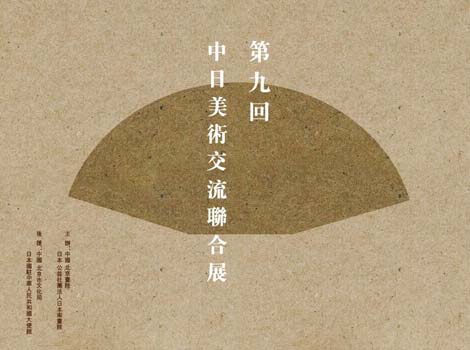Art Exchange between China and Japan Joint Exhibition

- show time:2014-09-26 to 2014-10-08
- Organizer:Beijing Fine Art Academy and Japan South Academy of Painting
- venue:Art Museum of Beijing Fine Art Academy
The ninth “Art Exchange between China and Japan Joint Exhibition” which co-sponsored by the Beijing Fine Art Academy and Japan South Academy of Painting, will be held in Art Museum of Beijing Fine Art Academy from September 26 to October 8, 2014.
The history of friendly association between China and Japan can be traced back to the Tang Dynasty, which both organized by government and the folk organizations. The contents of exchange include economic and cultural aspects. Through these exchanges, people of the two countries can learn from each other, promote the economic and cultural level jointly, and be beneficial to the improvement of people's living standard. This fine tradition is worthy to be developed in the long-term.
The communication of painting between China and Japan especially prosperous in Song Dynasty, many works of artists in Song Dynasty is very popular in Japan. Viewing from the category of the communication, it seems only belong to the painting department. But actually, it is the same genes and aesthetic tendency in some aspects of culture of the two countries. This commonality is rooted in the culture and even more impressive than any other communication, and it is the driving force that supports long-term friendly exchanges of China and Japan. From the painting department itself, art exchange between China and Japan is also very significant for the development of two countries’ painting.
Painting in southern Japan formed in seventeenth century in the mid Edo period, originated from the literati painting of China, especially inspired by Nanzong painting of the Ming Dynasty. Thus it is called the "Southern painting" directly, which means "literati painting", and was the most representative style of painting in Edo age of Japan. As the literati painting in Japan, Southern painting also expressed concerning and love on the landscape, flowers and birds painting, and also focused on ink in the form of language. In twentieth century, although southern painting no longer has outstanding artistic status, it is still a painting tributaries flowing quietly, and got many new achievements. From the works of "The Ninth Art Exchange between China and Japan Joint Exhibition ", we can find that painters of southern Japan always dedicated to ink painting. Painters are making efforts to promote the expressing ability of ink painting to a certain level in their familiar painting subjects. From their works we can find their efforts to achieve "the multicolored ink" based on the absorption of the knowledge of light and shadow, and not just limited in innovation in the form of line and ink. In this aspect of art pursuit, artists need to explore unceasingly from the material and aesthetic conception. In material terms, Japanese pay much attention to the quality of painting brush, ink, paper, and ink stone, which provides good material guarantees for the development of southern painting. In the aesthetic conception, southern painting show a kind of quiet and elegant feeling, and a sense of nostalgia. These characters are all worthy to be referenced by Chinese ink painting.
Although the number of participating artists of China is not as many as Japanese painters, but their works which were exhibited are more diverse. In fact, the exhibition just likes a window which shows the current situation of Chinese painting. Chinese painters tend to represent a kind of spirituality through the painting, such as the spirituality of animals, mountains and rivers, flowers and trees, and characters. Especially for the young painters, they are trying to find new forms of language on the basis of inheriting the tradition, aiming to express new perceptions of the world of the young people. They have mastered a solid foundation of shaping ability, and try to put painting brush and ink into good use, and excavate expressing ability of color. In this way, the contemporary paintings are showing diverse appearances while maintaining the traditional aesthetic characteristics, and complementing to paintings of southern Japan.
The cultural exchange between China and Japan is the foundation of the friendship of the two countries, art communication is meaningful for the two countries to understand and respect each other, artists of two countries are all very cherish this opportunity of communication, both sides are willing to contribute to strengthen the friendship of China and Japan.
.jpg)
.jpg)
.jpg)
.jpg)
.jpg)
.jpg)
.jpg)
.jpg)
.jpg)
.jpg)
.JPG)
.JPG)
.JPG)
.JPG)
.JPG)
.JPG)
.JPG)